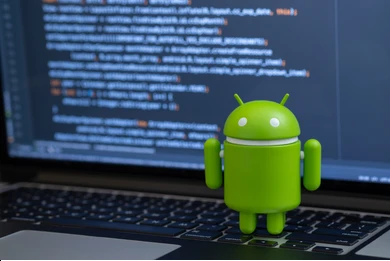The Android mobile operating system has been around for a long time and is still one of the top choices for developers.
However, many apps have started to prefer iOS instead.
The reason for it is the new features in iOS, such as ARKit and XCode's Drag and Drop, which make building apps easier than ever before.
Even Android itself has seen a big change towards better cross-platform compatibility, with Kotlin Multiplatform being one example of this trend changing how we think about building apps on mobile platforms going forward.
So which Andriod frameworks would make the developer still prefer Andriod in 2023?
Read further to find out!
Ionic
This free, open-source Andriod framework is supported by a community of over 2 million developers, including those who provide Android mobile application development services and have contributed to its codebase since it was first released in December 2015.
Ionic has redefined the way to build cross-platform hybrid apps using web technologies such as HTML5/JavaScript, AngularJS, Cordova or Web Components (React Native).
These frameworks can be leveraged in your next project without any experience with these technologies.
Xamarin
Microsoft’s cross-platform mobile app development framework was first released in 2013 as an open-source project, making it free for developers to use in commercial projects and supporting C#, F# (a functional language) along with many other programming languages, including Java and Python.
It allows you to write code once and deploy it across iOS, Android, Windows and MacOS.
The platform also works seamlessly with Visual Studio Code which makes it easy for anyone who has no experience coding on their own machine but wants better results than just using drag-and-drop tools like AppCode or IntelliJ IDEA.
Apache Cordova
If you are up to developing a native mobile app using HTML, CSS or JavaScript in your next project, then this framework is all you need.
This open-source framework allows you to use the device's accelerometer, camera and other hardware capabilities. It also allows you to access local storage, push notifications and other features.
Apache Cordova has been around since 2011, when it was created by a company called PhoneGap (now Adobe).
At its core, Apache Cordova is an app runtime platform that allows developers to create hybrid applications. These hybrid apps can run on either iOS or Android without compromising any aspect of performance in either of these platforms.
This platform does so by combining web technologies with native components provided by each platform's respective SDKs (software development kits).
Kotlin Multiplatform
Kotlin Multiplatform is a new product from JetBrains, a company that produces developer tools for the Android and iOS platforms. This is a framework for creating multiplatform applications with Kotlin (a language designed by Google to make coding faster).
Kotlin Native is a new toolchain that uses Kotlintoken as its native compiler, allowing you to write apps in Kotlin and target multiple platforms at once.
Flutter
If time is a major constraint for the high-quality native app development that you are working on right now, then flutter sure would be a good choice.
This mobile app SDK allows you to build fast, beautiful apps without compromising developer experience.
After the sharp rise of the frameworks like React Native and Kotlin over the past few years, this framework is becoming more popular and picking up the pace of popularity as the former two frameworks.
The main reason behind its popularity among the developers who provide
android mobile application development services is that it's easier to use than React Native or Kotlin since it uses C++ instead of JavaScript, which makes it faster at runtime.
Conclusion
After reviewing the top 5 Android frameworks, you can see that there are many great options to choose from.
Some may use Flutter for a lot of our mobile apps, and it has been fantastic to work with it.
In terms of performance and accessibility, we're also big fans of Ionic and Apache Cordova because they do such an amazing job at making every device feel like a native one.
What are you waiting for if you haven’t checked out Xamarin yet?
It's really easy to get started using their IDE once installed on your computer, along with all the resources needed, such as icons and fonts (which can be downloaded!).
We hope this article has helped give some insight into which framework might be best suited for your project needs!


